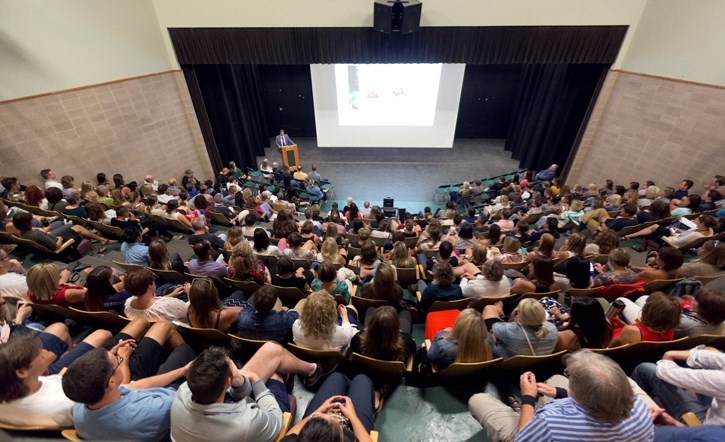A provincial decision to tweak the funding formula for students from Grade 10-12 could leave the local school division $300,000 short, forcing it to scale back summer programs or find efficiencies in its budget.
Chris MacPhee, superintendent for Canadian Rockies Public Schools (CRPS), revealed the news during a school board meeting on Jan. 16.
“There’s always been slight modifications that have happened to the funding formula for high school, or for per student funding, over the years and we manage them as best we can within our own budget structure for the school division,” said MacPhee in a followup interview on Jan. 17.
“We do have other reserves we can draw upon, but we are hopeful that we will continue to work towards solutions regarding the challenges small rural high schools face,” said MacPhee.
If a solution isn’t found, he said, summer programs offered by the Outdoor Learning Centre (OLC) could be scaled back to make up for the loss in revenue.
“I don’t picture our outdoor education centre closing at any time, but I don’t know about our ability to be able to continue to offer it to everybody,” said MacPhee, adding more than 100 students have expressed interest in the outdoor learning centre’s summer program.
Currently, high schools are funded based on the number of credit enrollment units (CEU) a student takes each year.
In previous years, the province funded high schools based on a 60 CEU cap, however, that cap was reduced to 45 CEUs per student for the 2017/18 school year.
As a result, the province is no longer paying for students who decide to take more courses than they need, leaving school divisions to pick up the tab to cover the cost of the programs they take.
“We’re funded by how many credits that high school student earns, so part of the entrepreneurial model that Chris brought to our division was to maximize how many credits the kids were earning. So by introducing other programs like outdoor learning, dual credits and work experience, the students were encouraged to broaden their educational base and earn more credits, which represented more dollars into the system,” said Carol Picard, chair of CRPS.
“It allowed us to offer more courses and add more teachers to keep our class sizes healthy.”
MacPhee said the modification to the funding formula as it currently stands will hurt the school division’s bottom line because a number of students regularly surpass the 45 CEU limit, thanks to programs such as outdoor education and the dual credit program.
“We utilize those dollars that come in to support different types of programing,” said MacPhee. “The challenge is when you put a cap on that we run into the challenge of not being able to afford programs.”
According to the province, the average student earns 37 CEUs per year, well below the cap set by the province.
“Statistics show that most students average 37 CEUs per year, so the reduction from 60 to 45 credit enrolment units does not significantly impact most high school students,” wrote Lindsay Harvey, press secretary for the minister of education.
“In budget 2017, these adjustments were made to help ensure that student learning is funded appropriately while minimizing the impact on students in classrooms.”
She acknowledged the school board’s concerns, but added that more than two-thirds of high schools in the province have not been affected by the changes.
“We have heard some concerns from school boards regarding changes to the CEU cap and are considering that feedback. Any changes to high school funding would be announced when the provincial budget is tabled in spring.”
Locally, Grade 12 students at Canmore Collegiate average about 30 CEUs per year, according to MacPhee, however, students in Grade 10 and 11 often average closer to 50 CEUs per year making up for the difference.
“A basic education now is close to 45 CEUs per student in most cases, but we’re in a time now where Alberta is recognized as a province within the world where our results are extremely high and some of that is because of these different opportunities we are able to offer to our students because of the entrepreneurial model that was set in place,” said MacPhee.
While the new funding formula has been in place since September, MacPhee said he is optimistic the ministry of education and school division will find a solution.
“The ministry has been very open in talking with us and other school divisions to understand the impact of the cap,” said MacPhee.
If the province doesn’t change its formula, the school will be on the hook to cover the $300,000 shortfall on top of a projected $320,000 deficit the division is already facing, which will be covered through its operational reserves.
“This is not about money, this is about us opening as many doors as possible for our students and the root they want to take with their educational experience,” said MacPhee. “Alberta has a very strong educational system and a lot of it is because of the options that we are able to provide to our students.”




